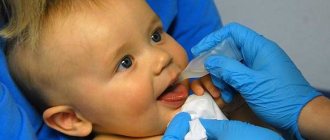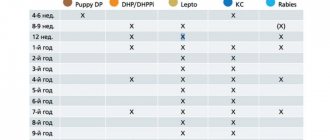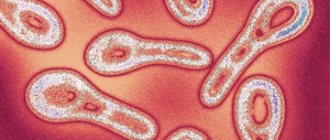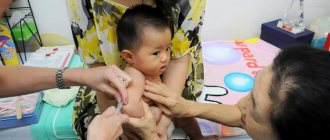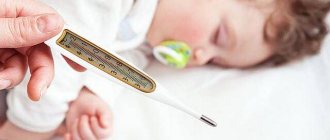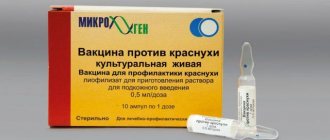Pentaxim is a modern combined pentavalent vaccine that protects against five infections at once, in particular, diphtheria, whooping cough, tetanus, Haemophilus influenzae and polio, and is used in the first two years of life. The use of an immune suspension in children has made it possible to reduce by a third the number of injections intended for them by the National Vaccination Calendar.
Today Pentaxim is recommended by WHO and is included in the vaccination schedules of most developed countries of the world. In our country, the drug was certified back in 2008 and has been successfully used in pediatric practice for a decade.
Details about the Pentaxim vaccination
The Pentaxim vaccination is intended for immunization of young children. The drug was developed taking into account the peculiarities of the development of immunity in a child. The vaccine is produced by Sanofi in France. In 2015, the drug manufacturer signed an agreement with the domestic company Nanolek allowing the vaccine to be packaged in Russia. Therefore, parents who are planning to vaccinate their child may be faced with choosing a drug based on the manufacturer (Russia or France).
The decision to produce the drug Pentaxim in Russia is due to a shortage of the vaccine. The vaccine appeared in 2008, but due to the need for multiple administrations, doctors were faced with a shortage of the drug. In 2021, numerous complaints from doctors were made public that the Pentaxim vaccine had disappeared in Russia.
The drug is available in the form of a lyophilisate (powder or porous solid mass) complete with a solvent (suspension). The vaccine must be prepared before administration. One dose of the suspension contains toxoids: diphtheria, tetanus, pertussis, filamentous hemagglutinin (a protein that triggers the production of antibodies in the body against whooping cough). Unlike the domestic DTP, the Pentaxim vaccine also contains three types of inactivated polio viruses. Excipients: aluminum hydroxide, formaldehyde, Hank's salts medium, phenoxyethanol, sodium hydroxide or acetic acid, water. The lyophilisate contains polysaccharide of Haemophilus influenzae type B with tetanus toxoid.
What diseases does it protect against?
The Pentaxim vaccination is used in young children for the purpose of immunoprophylaxis of dangerous diseases. The composition of the vaccine provides immunity against the following infections:
- whooping cough;
- diphtheria;
- tetanus;
- polio;
- Haemophilus influenzae.
Do I need to get the Pentaxim vaccine?
Current legislation completely shifts responsibility for the health of children to parents. Therefore, doctors do not insist on Pentaxim vaccination. The pediatrician explains to the parent what the advantages of this vaccine are and how it will benefit the child. No doctor will force parents to give Pentaxim to their child. The legal representatives of a small patient have the right to write a refusal of immunization.
The decrease in the number of infected children is associated with mass immunization of the population. Even before 1957 (before the development of the DTP vaccine), whooping cough, tetanus and diphtheria claimed millions of lives every year. Outbreaks of infectious diseases acquired pandemic proportions. With the development of the first vaccination against dangerous diseases, humanity has stepped far forward. Vaccinated patients remained protected from dangerous infections. Over half a century, an impressive number of people have been immunized. Vaccination of young children has provided them with reliable protection. All this helped to reach a high level. Cases of whooping cough, diphtheria and tetanus were detected less and less frequently. Nowadays, outbreaks of these diseases are practically unheard of. But the point is not that they disappeared. Simply, a person is protected from infections by the immunity acquired during the immunization process.
Whether or not to vaccinate your child with Pentaxim is up to each parent to decide for themselves. But mothers and fathers, grandmothers and grandfathers must adequately assess the possible risks in case of refusal to immunize. If you do not vaccinate your child with Pentaxim, then you can only hope that the baby will be surrounded by vaccinated children who cannot become a spreader of the infection.
Advantages of Pentaxim vaccination over other vaccines
The Pentaxim vaccination is a new vaccine compared to the domestic DPT vaccine. The drug Infanrix is also considered as an analogue. Typically, one of these drugs is used to immunize a child against whooping cough, tetanus, and diphtheria. But most often parents have to compare Russian DTP and Pentaxim.
Benefits of Pentaxim vaccination:
Who makes the Pentaxim vaccine: country of origin
The Pentaxim vaccine is produced in France by the world-famous pharmaceutical company Sanofi Pasteur. The immune solution has maximum safety and has a small number of contraindications.
That is why this suspension is used today for vaccinating children in most developed countries of the world, as it is recognized as one of the most effective and reliable among vaccine preparations with similar quality characteristics.
Vaccine Pentaxim
Starting in 2021, the Pentaxim vaccine is produced in Russia in the Kirov region. The domestic suspension is fully consistent with the French solution, not inferior to it in quality and without differing in the main components.
Currently, the domestic drug Pentaxim is administered to children in clinics free of charge, since it is approved by the Ministry of Health and is included in the National Vaccination Calendar as a mandatory vaccination.
Indications for vaccination
The Pentaxim vaccination is given to a child according to age, taking into account individual health indicators. The main basis for immunization is the initiative of parents or other legal representatives.
It is recommended to vaccinate your child if:
- the baby has reached the age of 2 months (recommended for starting immunization);
- the child requires revaccination;
- the child has a weak immune system and a high risk of infection;
- the child lives in an unfavorable epidemiological situation with a high rate of infection in the population;
- the child attends preschool educational institutions, clubs and sections, where he comes into contact with a large number of children.
At what age is the vaccine given?

If necessary, referrals are given for examination and consultation with specialists. Doctor Komarovsky recommends not to miss the scheduled vaccination date. Otherwise, the baby is at risk of contracting severe infections and viruses.
And in childhood, many diseases can result in disability or death. Pentaxim is usually given to children under 5 years of age. The Hib component is allowed to be administered up to 5 years 11 months and 29 days inclusive.
A suspension in a syringe without lyophilisate can be used to immunize children of any age and adults who have not previously been vaccinated.
Contraindications
Pentaxim vaccination is not given if parents are against immunization. In this case, a vaccine refusal is issued, which is signed by the child’s legal representatives.
Contraindications for the drug Pentaxim:
- acute infectious diseases;
- exacerbation of chronic infections;
- hypersensitivity or intolerance to the components of the drug;
- increased body temperature of unknown origin (including during teething);
- some neurological disorders (medical withdrawal from Pentaxim is given by a neurologist).
With extreme caution, the drug is administered to children who are prone to febrile seizures and have brain pathologies.
Quality control
How does the quality control department work at ? The laboratories are equipped with a computer system to which all the equipment used to test products is connected. The results of all tests immediately go there and this “primary data” can no longer be deleted. If suddenly during the release control process it turns out that something is wrong with a batch of vaccine, it will be impossible to hide it. In addition, samples from each series are archived. They will be needed for investigation if the vaccine is suddenly suspected of causing harm. And they are stored for the entire shelf life of the vaccine!
Vaccination scheme with Pentaxim vaccine
Pentaxim vaccination is recommended at the age of 2 months. Subsequent stages of immunization are performed with a break of one and a half months. Revaccination is prescribed 12 months after the last dose.
Vaccination schedule:
- first administration at 2 months;
- re-vaccination no earlier than after 45 days - at 3.5 months;
- the third dose is administered one and a half months after the second - every six months;
- the fourth vaccine - revaccination - is recommended exactly one year after the third vaccination.
Children under the age of one year are administered the suspension along with lyophilisate. After a year, only a substance containing inactivated polio viruses and toxoids is administered. The vaccine is given intramuscularly. For younger children, the preferred injection site is the thigh. For an older child, the vaccine may be administered in the shoulder area.
Compatibility with other vaccines
In medical institutions, doctors often suggest combining vaccinations - giving several vaccinations at the same time. Pentaxim is a serious vaccine that provides immunity against five dangerous diseases at once. Therefore, parents need to know which vaccinations Pentaxim can be given with.
- Prevenar and Pentaxim. A combination of these vaccinations is acceptable. The first vaccine protects against diseases caused by pneumococci, and the second against five types of infectious diseases. Vaccinations can be done together, on the same day.
- Hepatitis and Pentaxim. These vaccinations can be given together. Hepatitis rarely causes negative reactions; most children tolerate the vaccine well. In combination with Pentaxim, Hepatitis can be diagnosed on the same day.
- BCG and Pentaxim. It is not recommended to give these vaccinations together. To avoid unexpected reactions, it is better to separate these vaccines by at least a month and a half.
- Mantoux and Pentaxim. Allowed to do together, but on different days. Usually, the Mantoux reaction is first performed, the result is checked after 3-4 days, after which Pentaxim is administered.
- Infanrix and Pentaxim. These vaccines are identical, so they are not given together. If necessary, you can replace Infanrix with Pentaxim or vice versa. Please note that the Infanrix vaccine contains a component against hepatitis B, so the child will need an individual immunization schedule against this infection.
- DTP and Pentaxim. These vaccinations can be interchanged, but you should always take into account the multi-component composition of Pentaxim. When switching from one vaccine to another, an individual schedule for vaccinating the child against polio and hemophilus influenzae will be required.
Relevance of Pentaxim vaccination for children under one year of age
From birth, children become susceptible to various infectious and viral diseases. The immunity of infants is not fully developed. Therefore, it is important to protect the baby as much as possible from infection with dangerous pathologies. It is advisable to vaccinate children under one year old with Pentaxim.
Unlike DTP, this drug is well tolerated and does not cause complications. The French vaccine is suitable for immunizing babies over two months of age. Many parents decide to replace the domestic vaccine with an imported one.
According to reviews from mothers and fathers, after Pentaxim there is no fever, the injection area does not swell or turn red. The relevance of immunization with Pentaxim for children under one year of age is due to the poor epidemiological situation in the country and the high susceptibility of the child’s body to infection with infections and viruses.
The popularity of the drug is explained by its following advantages:

- polyvalency. The drug protects against five dangerous infectious viral diseases at once;
- low antigenic load on the body. Achieved due to the content of toxoids and weakened viruses in the product;
- reducing the number of visits to the clinic (several injections of Pentaxim are needed to form stable immunity);
- minimal likelihood of developing vaccine-associated infectious diseases;
- low reactogenicity. It is caused by the absence of merthiolate in the preservative, which is a mercury-containing substance and can negatively affect the functioning of the nervous system. Also in Pentaxim, the pertussis component is devoid of the cell membrane, which usually causes severe side effects and irreversible complications in children. The risk of developing negative reactions from the French vaccine is 0.6%;
- reliable protection against whooping cough. The effectiveness of DPT in preventing infection with pertussis bacteria is lower.
The only drawback of vaccination with Pentaxim is the high cost of the procedure. Immunization with domestic drugs in local clinics is carried out free of charge.
Recommendations after vaccination Pentaxim
Immediately after administration of the drug, the baby requires close monitoring. Typically, medical personnel monitor the patient's well-being for 20 minutes. During this period, acute allergic manifestations may develop, which will be successfully treated by medical professionals. If after half an hour the child has no negative reactions, then you can go home.
After vaccination it is recommended:
- refrain from water procedures in a hot bath, it is allowed to bathe the baby in the shower;
- exclude trips to shops and shopping centers for 2-3 days;
- measure body temperature and, if necessary, give antipyretic drugs;
- monitor the injection site, and if unusual reactions occur, seek medical help;
- refrain from consuming new foods, vitamins and other medications for 5 days.
If the little patient feels well after the Pentaxim vaccination, then you can take him for a walk. It is important that the air temperature is comfortable - not frost or heat. It is better to choose uncrowded squares and parks for walks.
If the body temperature remains normal and the child’s health is satisfactory, then you can attend kindergarten the very next day after vaccination.
Maximum allowable interval between vaccinations

It is also possible to increase the break to two months. Too long a gap can lead to the fact that vaccination will be ineffective and the child will become ill with an infectious viral pathology.
Pediatricians allow a slight increase in the interval between the first two vaccinations, but do not advise taking too long a break before the third injection. If the plan is violated, the child’s health condition is taken into account. When carrying out immunoprophylaxis, there is only the concept of a minimum interval between vaccinations.
A certain interval is needed to ensure that the vaccinated person does not develop adverse reactions and that immunity is properly formed. There is no concept of the maximum permissible break when administering Pentaxim vaccinations. Each child's body reacts differently to the introduced antigenic material. Therefore, the optimal break is determined by the pediatrician individually.
A vaccination given later than the date set in the schedule does not always lead to the need to start immunization again. The main rule of Pentaxim vaccination is to give injections to healthy children.
Normal child reactions to vaccinations
Pentaxim vaccination is well tolerated by children. But sometimes babies have specific reactions. They are associated with the presence of a pertussis component in the vaccine. It is pertussis toxoids that most often cause side effects.
Normal reaction:
- Slight increase in body temperature. Within three days the child may have a temperature of 37.5-38 degrees. 25% of vaccinated children develop a fever within 24 hours after vaccination.
- Tearfulness. After vaccination, a child develops a violent immune reaction. Therefore, the baby may be lethargic, capricious, and sleepy. This condition goes away on its own within 2-5 days.
- Decreased appetite. After vaccination, the baby’s body actively recognizes the infection and produces antibodies. Therefore, other biological processes change. Children may lose their appetite after vaccination. It is better not to force the baby to eat, but it is necessary to give enough water.
- Redness and hardening of the injection site. After Pentaxim, 90% of children experience redness at the injection site. After a few days, the redness and slight swelling will disappear on their own. You cannot make compresses yourself or apply ointment to the injection site. If an allergic reaction spreads along the leg, you should consult a doctor.
How long does it take for a reaction to a vaccine to appear?
A reaction to the vaccine may not appear at all. Many children tolerate Pentaxim vaccination unnoticed. Most often, increased body temperature and drowsiness appear at the end of the first day after the injection, and disappear after 2-3 days.
Analogs of Russian-made Pentaxim
The most famous domestic analogue of the Pentaxim vaccine is the Russian DTP vaccine . This suspension refers to a combined solution, which includes diphtheria and tetanus toxoids, as well as a pertussis component.
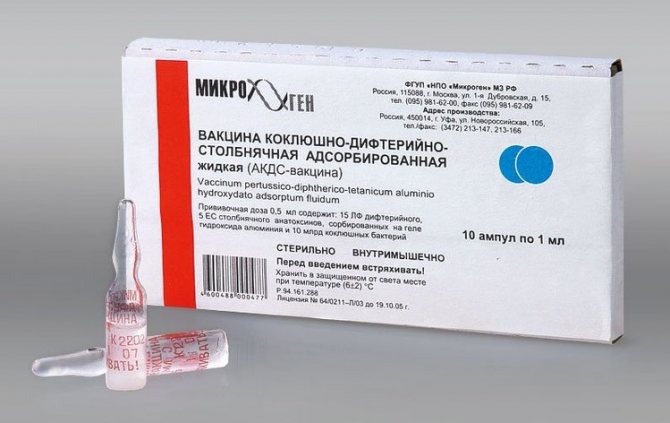
DPT vaccine
The last component is dead cells of whooping cough pathogens, which is why it differs from its foreign analogues, which do not include cellular elements, but only their protein fragments. According to the recommendations, the course of DTP vaccination consists of three injections of the drug given at intervals of 1-2 months, and revaccination at 18 months.
Unfortunately, Pentaxim of French origin is almost impossible to find in domestic pharmacies today. This is due to the fact that since 2021, Russian-made Pentaxim, created on the basis of the Kirov production complex and fully meeting all the standards of a foreign vaccine, has been supplied to clinics.
Side effects from vaccination
You should consult a doctor if your child has any adverse reactions to the vaccine:
- high body temperature lasts more than 3 days;
- elevated body temperature is not reduced by the usual antipyretics;
- a rash appears on the leg or body;
- sleep is disturbed, the functions of the nervous system have changed;
- convulsions occurred with or without high body temperature;
- lymph nodes become inflamed;
- nausea and vomiting, diarrhea occurred;
- muscle pain appeared;
- coordination of movements is impaired;
- changes in blood pressure and tachycardia.
Why are formaldehyde and aluminum oxide used in grafting?
Formaldehyde (formalin in liquid form) is used in vaccines as an inactivator of bacteria and viruses. The substance has carcinogenic properties and can lead to cancer.
Formaldehyde provokes chromosomal aberrations and gene mutations. If this element enters the esophagus, it causes severe abdominal pain, nausea and vomiting with blood, the appearance of protein and blood cells in urine, and kidney damage. The result of poisoning is acidosis, coma and death.
So far, scientists have not been able to determine the safety of the presence of formaldehyde in vaccines. Although the substance is in small quantities, it can still cause harm to the body. Aluminum salts are used in vaccination preparations as adjuvants that prolong the immune response.
Research shows that with prolonged contact of aluminum with brain cells, a person's ability to learn is reduced and there is a risk of developing dementia. This fact was confirmed during an experiment on animals.
Pentaxim contains aluminum and formaldehyde.
Where to get the Pentaxim vaccine
The Pentaxim vaccination can be provided for a fee at private immunization centers. The average cost of one dose of the drug is 1,500 rubles.
In public clinics they often offer DTP vaccination, but even there you can get Pentaxim for free. This drug is released in limited quantities and is recommended for special groups of the population - children with sensitive immune systems, a tendency to allergies, chronic diseases and others. You can discuss free Pentaxim with your local pediatrician.
Quality Management System
It is difficult to deny that there is some mistrust of Russian production. We are already accustomed to the fact that many people cheat, passing off their work as high-quality. Unfortunately, this is everywhere and it has become the norm. Surprisingly, it turns out that this can be “cured.” To minimize the human factor (negligence, unprofessionalism, selfishness, accidents, etc.), the GMP (Good Manufacturing Practice) QUALITY MANAGEMENT SYSTEM is in place. This is modern protection that reduces risks to a minimum. It does not allow the manufacturer to deviate from protocols, hide information, or produce low-quality products.
GMP implies regular checks (audits), not only internal, but also external. And not only by “regulatory authorities” (Roszdravnadzor), but also by representatives from other pharmaceutical factories. Lists of these audits hang on the information stand at the plant. At the time of Antonina’s presence at the plant, the list consisted of 26 items over 2 years. If you count, this is more than once a month.
Roszdravnadzor, of course, checks on “its” points, but it does not know exactly how production should work. Any flaws can only be seen by people who themselves work every day on the same production lines, equipment, etc. Such additional mutual control, as objective as possible in biopharma, is a necessity, because the cost of errors is very high!
ASKO-MED-PLUS LLC expresses its sincere gratitude
to Antonina Oblasova for providing the materials.
Vaccines containing similar components
There are many vaccinations that protect against tetanus, polio, diphtheria, whooping cough and diseases caused by Haemophilus influenzae. Pentaxim has analogues of domestic and foreign production. Drugs may differ in main and additional components.
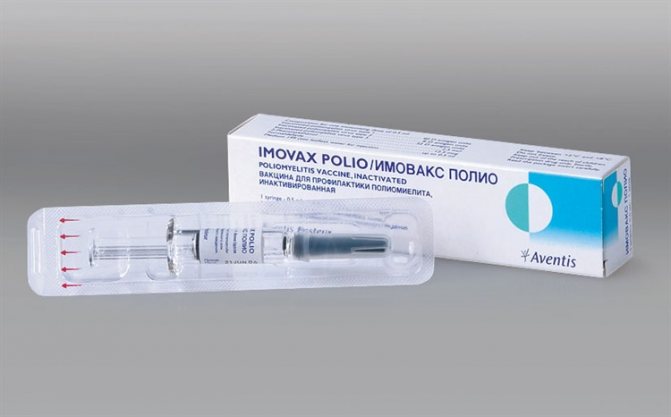
Vaccine Imovax Polio
Therefore, when deciding to replace Pentaxim with another immunization agent, you need to carefully study the composition in order to avoid the development of allergies or adverse reactions.
Analogues of Pentaxim are the following vaccinations:
- DPT;
- Hiberix;
- Imovax Polio;
- Infanrix Penta;
- Infanrix Hexa;
- Infanrix.
Side effects after Pentaxim in children
After the introduction of antigenic material into the body, an immune response develops. This is usually accompanied by certain symptoms.
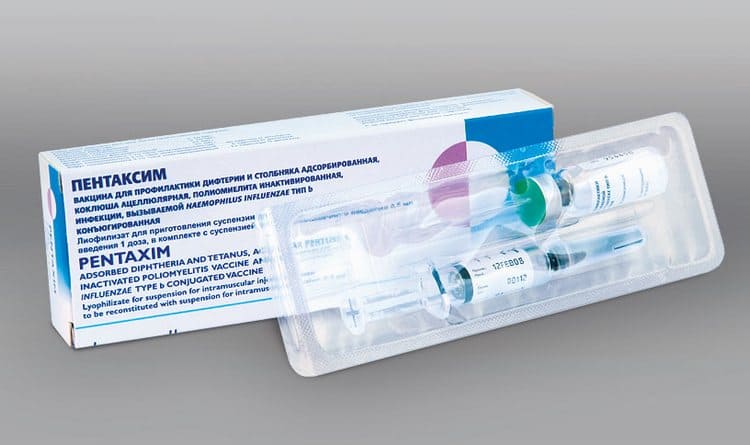
Vaccine Pentaxim
So, the baby’s temperature may rise to 37.5 degrees, a headache may appear, and sleep may be disturbed. These phenomena are considered completely normal and indicate the beginning of the production of antibodies and the formation of specific immunity.
According to reviews from parents and doctors, Pentaxim is easily tolerated. The low reactogenicity is explained by the absence of whole cells of pertussis and merthiolate, which are present in DTP and often cause the development of severe disorders of the central nervous system and brain.
Possible adverse reactions of Pentaxim:
- compaction, redness, swelling (up to 8 cm in diameter), pain at the injection site;
- general malaise;
- fever;
- nausea;
- runny nose;
- cough;
- moodiness;
- loss of appetite;
- insomnia;
- prolonged crying;
- diffuse swelling of the extremities;
- hives;
- prolongation of the intervals between respiratory movements (occurs in premature babies);
- neuralgia;
- cyanosis;
- bowel disorder.
Such adverse reactions are not dangerous to health and usually go away on their own. If symptoms are severe, the pediatrician selects drug treatment.

